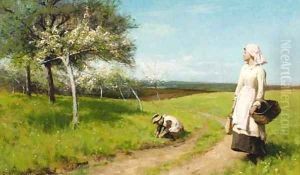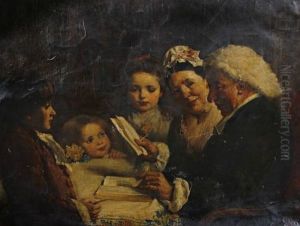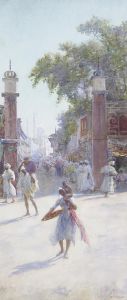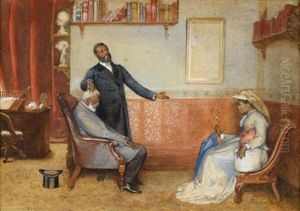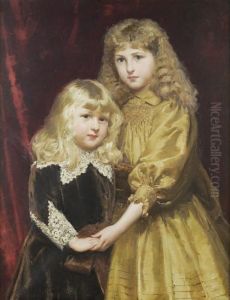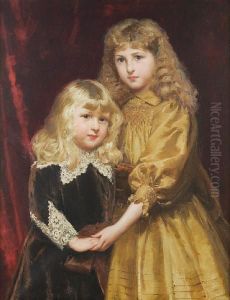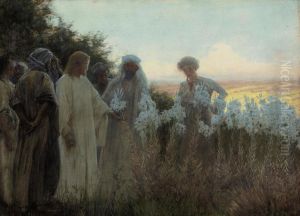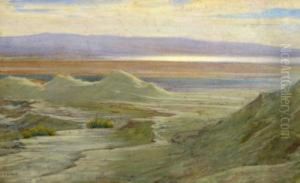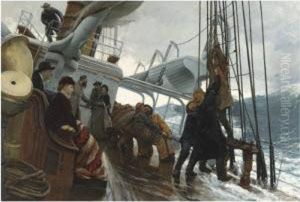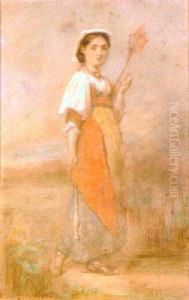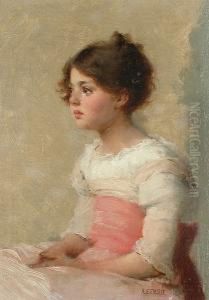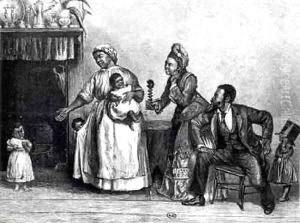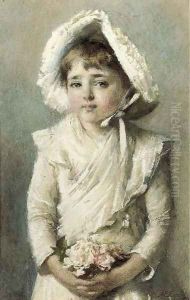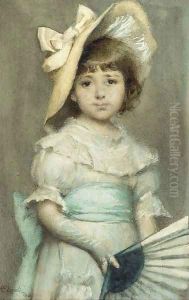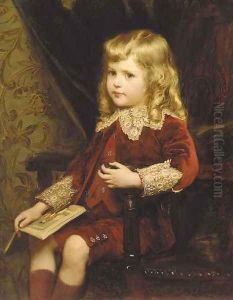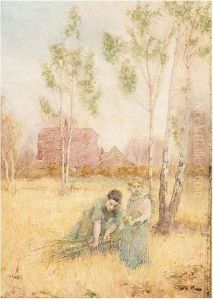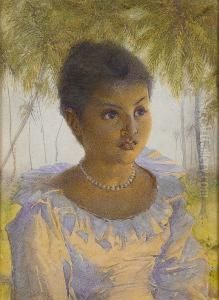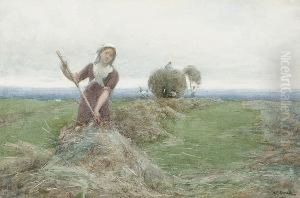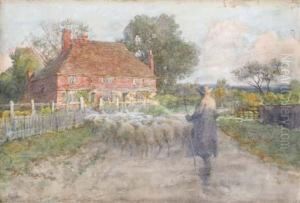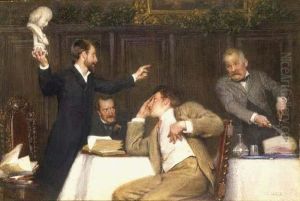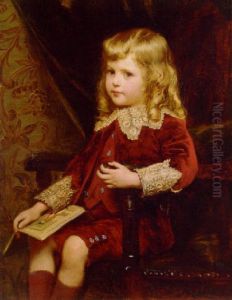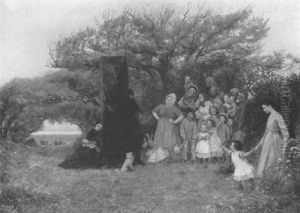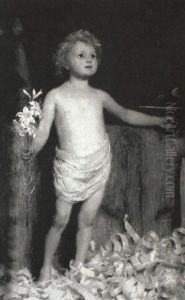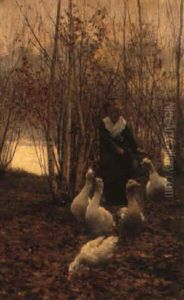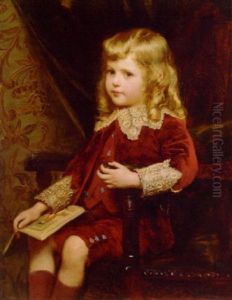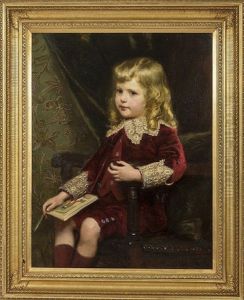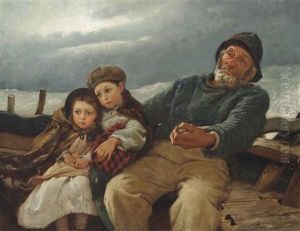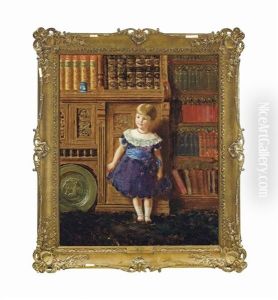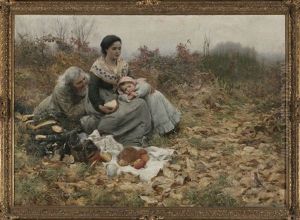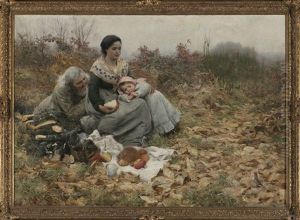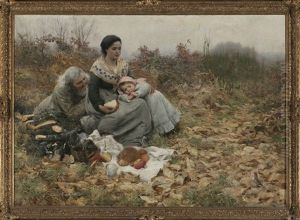Alfred Edward Emslie Paintings
Alfred Edward Emslie was a British artist born on June 29, 1848, in London, England. He was known for his work as a genre and portrait painter, as well as a photographer. Emslie studied at the Royal Academy Schools, where he was trained in the fine arts, especially painting, which was the main focus of his career.
Emslie's paintings often depicted historical scenes and figures, as well as contemporary life. His style was rooted in the academic tradition, with a strong emphasis on realism and attention to detail. He was influenced by the Pre-Raphaelite Brotherhood and by the broader movement of Victorian classicism that was prevalent during his time.
Throughout his career, Emslie exhibited extensively, including at the Royal Academy, where he first displayed his work in 1870. He became an Associate of the Royal Academy (ARA) in 1896 and a full Royal Academician (RA) in 1913, which was a significant honor and recognition of his contributions to the British art scene.
In addition to his painting, Emslie was also interested in photography and often used it as a tool to aid in his painting, a practice that was becoming more common among artists of the time. He would take photographs to capture the nuances of light and shadow and to study the composition of his subjects more closely.
Emslie's work was well-received during his lifetime, and he enjoyed a successful career. He was also an educator, teaching art and sharing his knowledge with the next generation of painters. Alfred Edward Emslie passed away on May 5, 1918. His works continue to be appreciated for their historical value and their representation of Victorian-era art and society.
